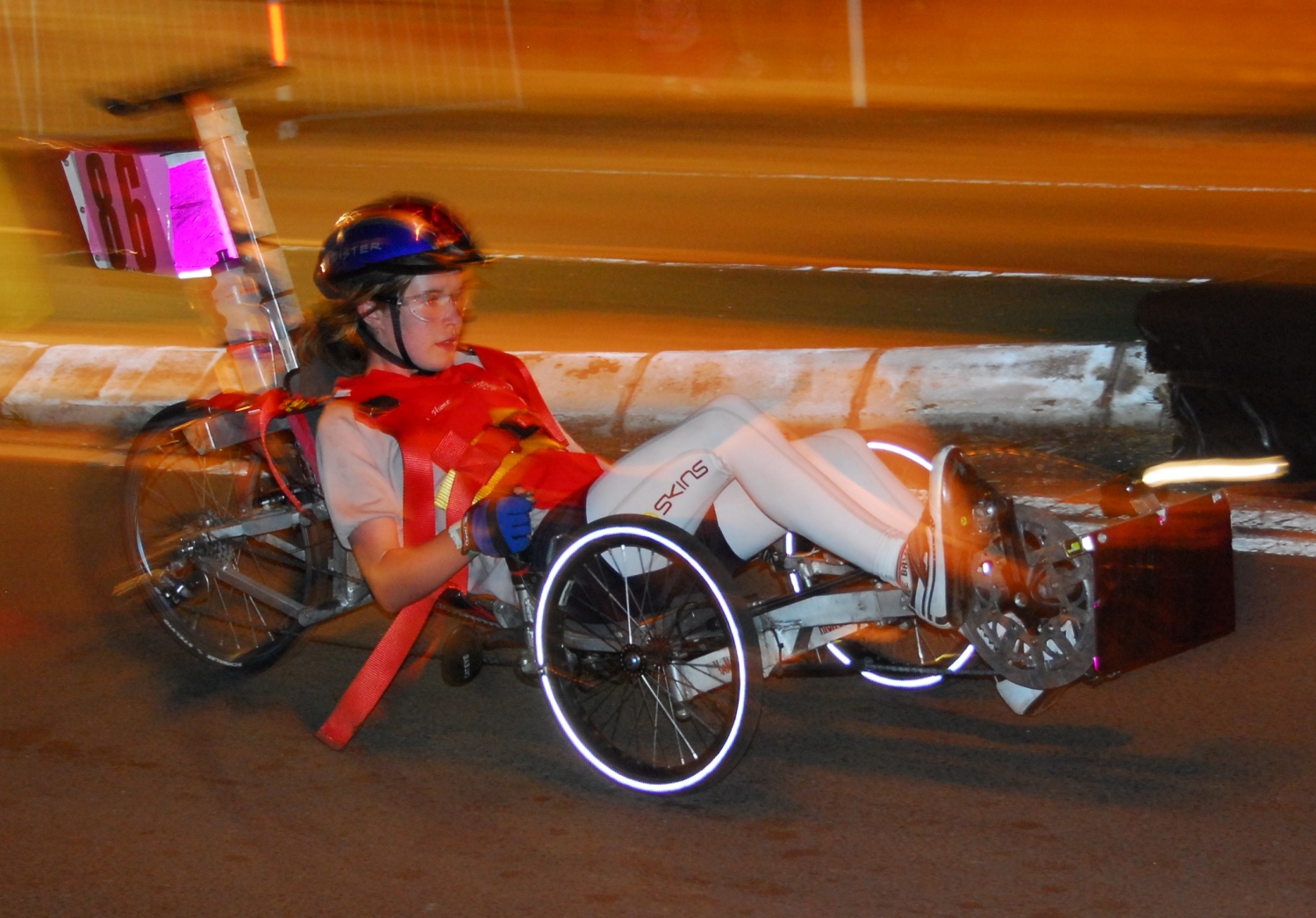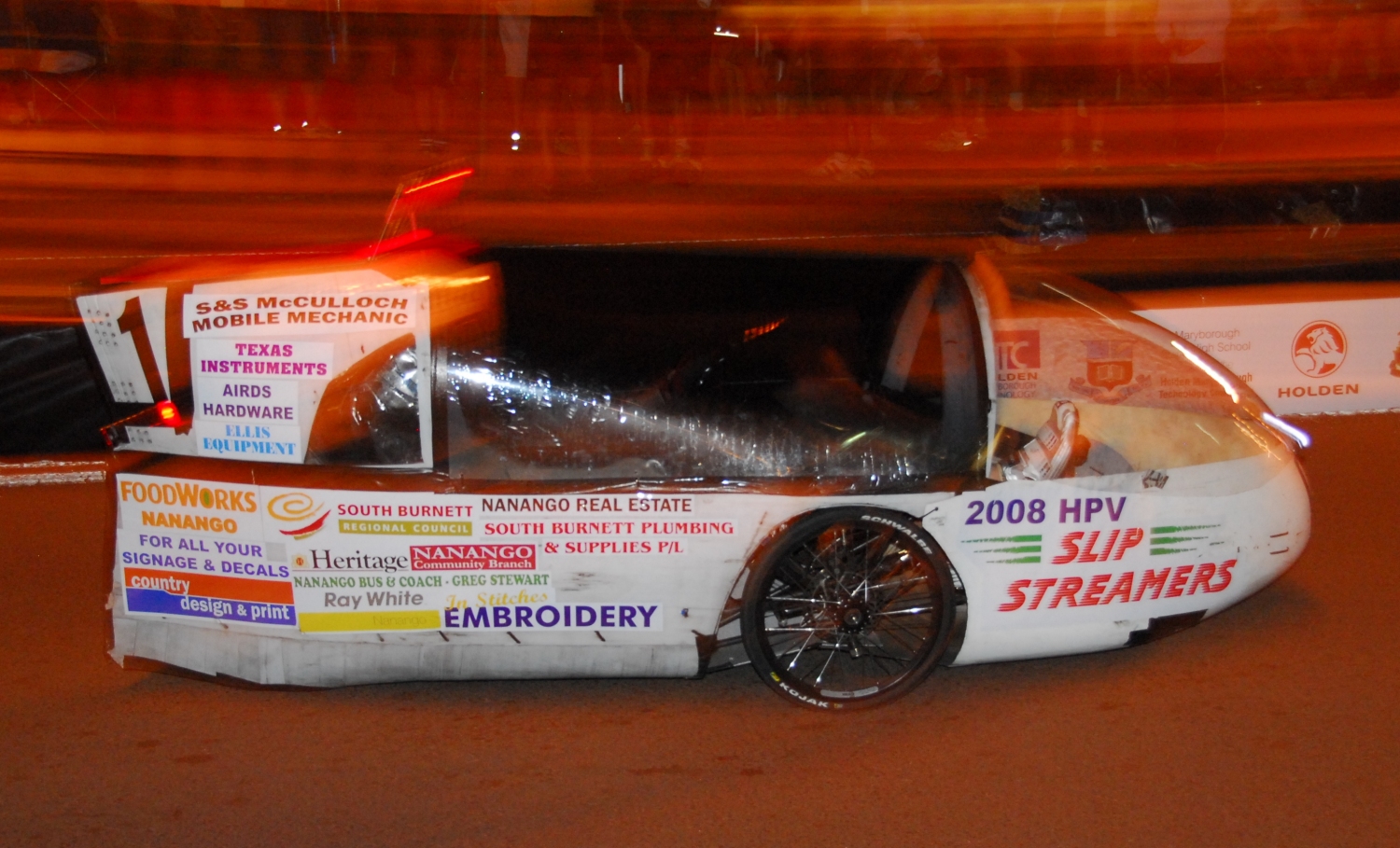Literally feeling the aerodynamic drag of vehicles
As we covered in Analysing Road Car Drag, most aerodynamic drag of current vehicles is created by separation pressure drag. Put simply, this is reflected in the size of the wake – the cross-sectional area of the disturbed air dragged along behind the car.
The most slippery vehicles in the world – the solar race cars – have reduced separation pressure drag to the extent that the other types of drag (eg viscous drag, induced drag and interference drag) become more important.
But in all conventional cars, it’s separation drag that remains the big one.
Now this gives rise to a rather interesting idea. Imagine you’re standing alongside an empty road. The day is a still one – there’s not much wind blowing. A car is rocketing towards you along the road, travelling at perhaps 100 km/h. It will pass close by to you. It grows in size and then roars past.
Now – what do you feel?
Clearly, you will be able to feel the wake – the eddies and turbulent air indicative of the aerodynamic disturbance of the car. This disturbance will take into account the separation pressure drag and the frontal area of the car – the two when multiplied form the vast majority of the actual aero drag that’s experienced by the car.
And, equally clearly, the smaller the air disturbance that you can feel, the greater the slipperiness of the vehicle.
The other day I could put this to the test. I wasn’t standing alongside an empty road, but instead close to the track where Human Powered Vehicles were racing. The event was the Holden Maryborough Technology Challenge (see here for the account I wrote of last year’s event) and the variety of vehicles was large. (Incidentally, I commend Holden for their on-going sponsorship of this event.)
The human-powered vehicles varied greatly in their aero slipperiness. Worst were the conventional recumbent trikes, about as aero slippery as bricks! Best were the fully-faired vehicles – extremely slippery not just in comparison to their unfaired competitors but also in absolute terms.
Half way along the main straight, and on pedal power alone, the best vehicles were achieving speeds of 40 km/h. (And incidentally, doing this for a full 24 hours of the race – it’s a stunning event.) By standing close to a barrier, I could be within a metre of them as they whizzed past.
Vehicles like the one pictured below clearly disturbed the air; the vehicle would shoot by, there’d be a pause, and then you could feel the turbulence.
But when this machine rocketed past (pictured is the winner), there was a pause – then nothing!
It was downright eerie, waiting for the air motion and then experiencing nothing that was discernible. Even stranger was the expectancy that, with the vehicle’s higher speed, you’d feel more buffeting – not less.
Perhaps it’s worth standing by the side of the road and assessing the wakes of different cars? I think I might just do that…

 Julian Edgar, 50, has been writing about car modification and automotive technology for nearly 25 years. He has owned cars with two, three, four, five, six and eight cylinders; single turbo, twin turbo, supercharged, diesel and hybrid electric drivelines. He lists his transport interests as turbocharging, aerodynamics, suspension design and human-powered vehicles.
Julian Edgar, 50, has been writing about car modification and automotive technology for nearly 25 years. He has owned cars with two, three, four, five, six and eight cylinders; single turbo, twin turbo, supercharged, diesel and hybrid electric drivelines. He lists his transport interests as turbocharging, aerodynamics, suspension design and human-powered vehicles.


on September 25th, 2008 at 11:03 pm
Don’t stand too close to the trucks Julian!!
Perhaps you need to design and trial aerodynamic fairings as a follow-up to the recumbent trikes you’ve built??
on September 29th, 2008 at 12:17 pm
Having just come back from holiday you really feel the difference between truck types.
Flat-nose (COE) rigs with a big box trailer buffeted the little hatchback around no end, flat trailers and/or conventional trucks much less so.
on October 1st, 2008 at 12:56 pm
Wakes are interesting. The aircraft guys use a “drag rake” which is a vertical array of pitot tubes to measure the wake behind a wing. A car would be harder, but a light skinny trailer carrying an array of pitot tubes could measure the wake directly and thus the actual drag. Just put the wheels back far enough not to disturb the flow at the measurement point, and you have a wake trailer. The flow under the car would confuse things a bit, but if you are working on improvements on the upper part of the car, it might work very well and be cheaper than a wind tunnel test.